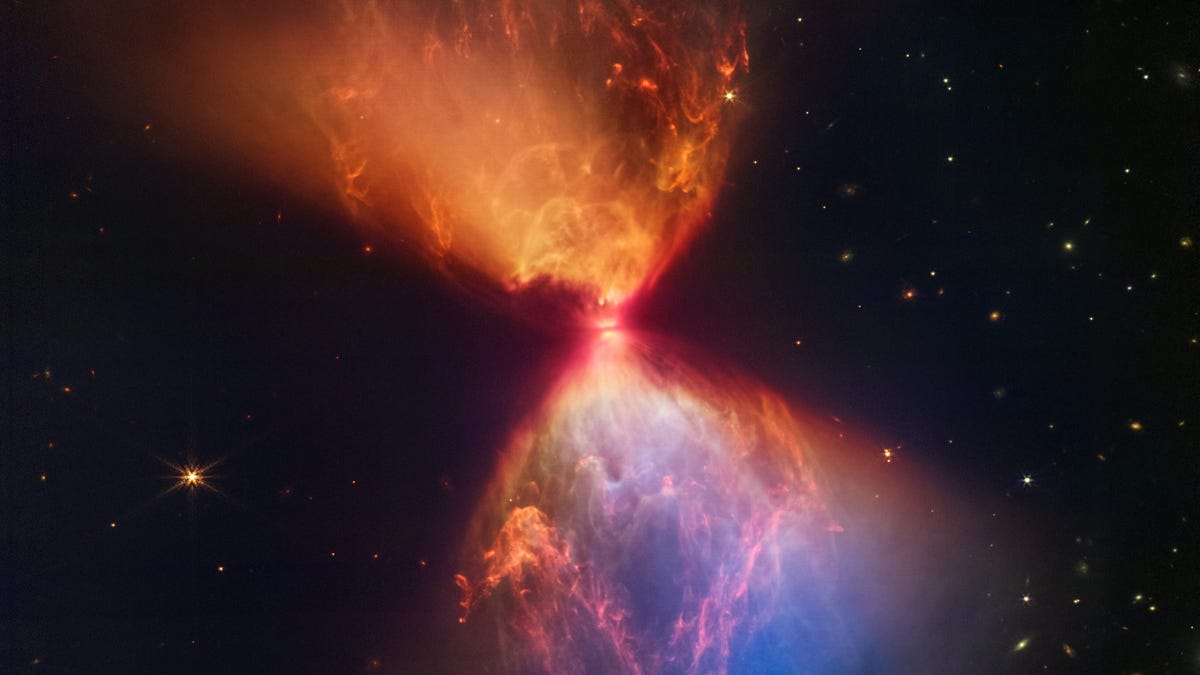NASA Webb Telescope Sees a Glorious 'Fiery Hourglass'
A baby protostar is at the heart of the wild formation.
The latest James Webb Space Telescope visual stunner is a look at a protostar -- a star in the act of formation -- that has been hiding out in a wild hourglass-shaped cloud known as L1527. The view, made possible by Webb's ability to see in infrared wavelengths of light invisible to human eyes, is breathtaking.
Here's Webb's image of L1527 in its full glory.
There's plenty of science to go along with the artistic side of the image. Webb shows us what our own solar system might have looked like in its earliest days.
The dark line at the neck of the hourglass is a protoplanetary disk, a rotating disk of gas and dust surrounding the protostar. The baby star casts light above and below, creating the hourglass appearance.
"The region's most prevalent features, the clouds colored blue and orange in this representative-color infrared image, outline cavities created as material shoots away from the protostar and collides with surrounding matter," said NASA in a statement on Wednesday. Blue areas indicate thinner layers of dust and orange represent thicker dust.
The L1527 protostar is a youngster, clocking in at only about 100,000 years old. It still has a lot of growing up to do. NASA describes it as a "small, hot, and puffy clump of gas" with a fraction of the mass of Earth's stellar companion.
The protostar is bulking up on its journey to becoming a full-fledged star by gathering gas and dust and building mass. "As it gains more mass and compresses further, the temperature of its core will rise, eventually reaching the threshold for nuclear fusion to begin," said NASA. And that's how a star is born.


